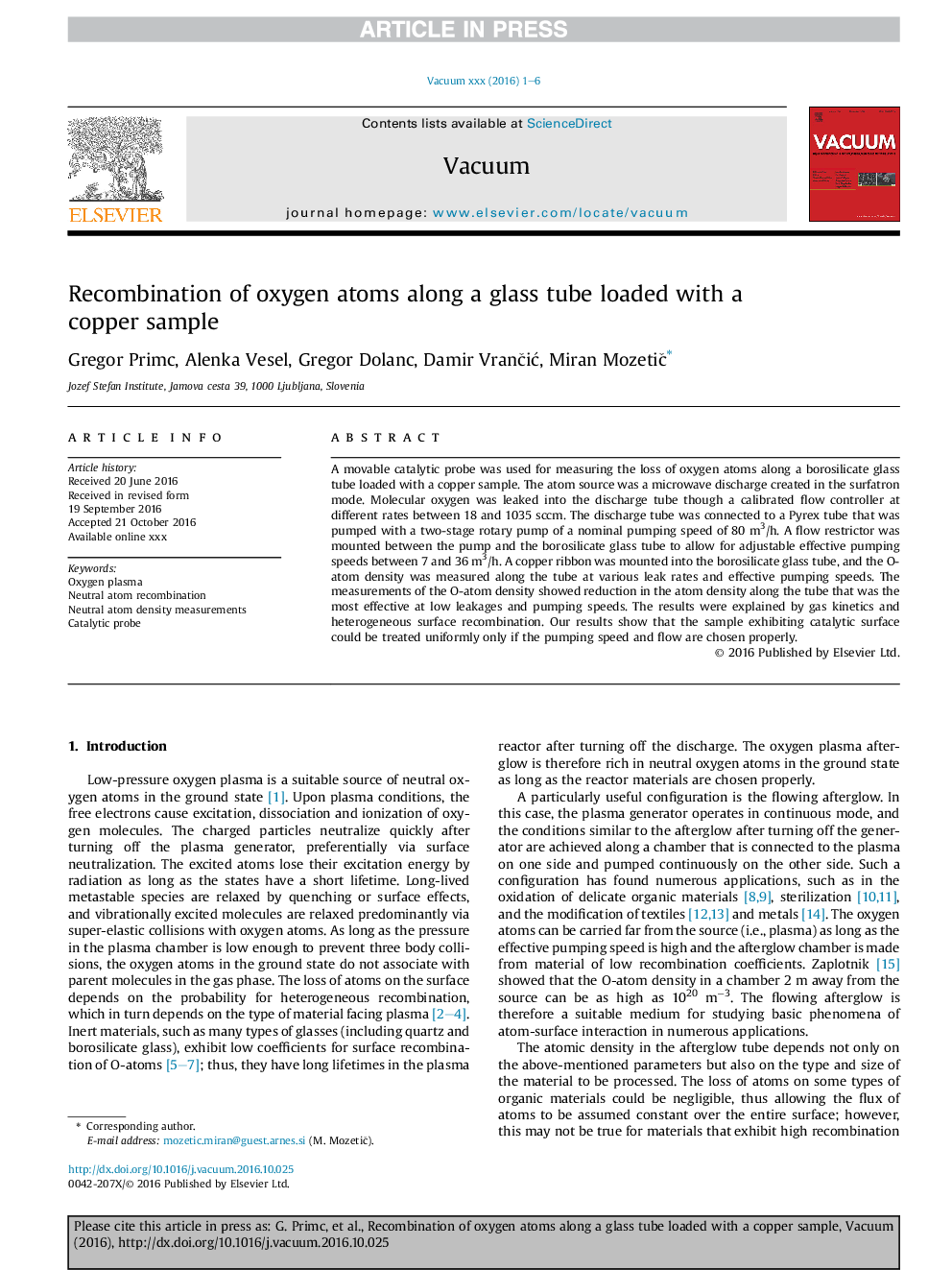| Article ID | Journal | Published Year | Pages | File Type |
|---|---|---|---|---|
| 5468346 | Vacuum | 2017 | 6 Pages |
Abstract
A movable catalytic probe was used for measuring the loss of oxygen atoms along a borosilicate glass tube loaded with a copper sample. The atom source was a microwave discharge created in the surfatron mode. Molecular oxygen was leaked into the discharge tube though a calibrated flow controller at different rates between 18 and 1035 sccm. The discharge tube was connected to a Pyrex tube that was pumped with a two-stage rotary pump of a nominal pumping speed of 80Â m3/h. A flow restrictor was mounted between the pump and the borosilicate glass tube to allow for adjustable effective pumping speeds between 7 and 36Â m3/h. A copper ribbon was mounted into the borosilicate glass tube, and the O-atom density was measured along the tube at various leak rates and effective pumping speeds. The measurements of the O-atom density showed reduction in the atom density along the tube that was the most effective at low leakages and pumping speeds. The results were explained by gas kinetics and heterogeneous surface recombination. Our results show that the sample exhibiting catalytic surface could be treated uniformly only if the pumping speed and flow are chosen properly.
Keywords
Related Topics
Physical Sciences and Engineering
Materials Science
Surfaces, Coatings and Films
Authors
Gregor Primc, Alenka Vesel, Gregor Dolanc, Damir VranÄiÄ, Miran MozetiÄ,
